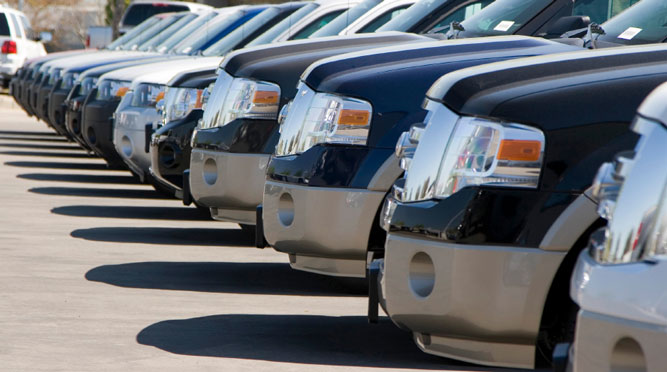Transportation
Transportation
The United States uses 28% of its total energy each year to move people and goods from one place to another. The transportation sector includes many modes, from personal vehicles and large trucks to public transportation (buses, trains) to airplanes, freight trains, ships and barges, and pipelines. By far the largest share is consumed by cars, light trucks, and motorcycles—about 58% in 2013, followed by other trucks (23%), aircraft (8%), boats and ships (4%), and trains and buses (3%). Pipelines account for 4%.
During the past century, dependence on vehicles burning petroleum-based fuels has become a defining component of American life. The United States, with less than 5% of the world’s population, is home to more than one-fifth of the world’s automobiles. In 2014, cars, motorcycles, trucks, and buses drove over 3 trillion miles in our country—farther than driving to the Sun and back 16,000 times. During the next 25 years, the total number of miles driven by Americans is projected to grow by about 23%, increasing the demand for fuel. However, the projected annual growth rate in that demand, 0.84%, is notably lower than in recent decades, largely owing to advances in efficiency and changes in the types of vehicles purchased. Overall, it appears that gains in vehicle efficiency will be offset by increased miles driven.
In 2015, cars, motorcycles, trucks, and buses drove more than 3 trillion miles in our country—farther than driving to the Sun and back 16,000 times.
92% of all the energy used in this sector comes from gasoline and diesel fuels. While powering engines, combustion of gasoline and diesel fuel emits carbon dioxide (CO2), as well as particulate matter, oxides of nitrogen (a prime component of “smog”), carbon monoxide, and unburned hydrocarbons. Those effects can be long-lived: When CO2 is released into the atmosphere, it functions as a heat-trapping greenhouse gas for as long as a century or more.
Alternative geological sources to conventional petroleum deposits, such as oil from low-permeability geological formations (tight oil), are adding appreciably to the nation’s supply of transportation fuels. But liquids from those sources cannot help solve the environmental issues associated with burning fossil fuels.
Efforts are well under way to find alternatives to oil. Biofuels , which provided about 4.9% of the nation’s transportation fuel in 2015, chiefly in the form of ethanol added to gasoline, are an option, but with limits. Corn ethanol production is energy-intensive, reduces the acreage devoted to growing food (in 2015, about 38% of the harvested corn in the United States went to making ethanol and its associated coproducts), and requires substantial amounts of water. Alternative types of vehicles—hybrids, all-electric vehicles , and vehicles powered by hydrogen or natural gas, for example—share the goal of reducing our dependence on oil. However, arriving at an optimal mix of vehicle types may be quite complicated, especially in finding a cost-effective solution. Vehicles designed for different fuels employ different engines, associated technologies, and maintenance procedures. Each requires its own distinctive fuel delivery system. Hydrogen filling stations, for instance, entail novel technologies and would require widespread deployment before hydrogen-powered cars became a practical alternative for most drivers. Potential mainstream adopters of plug-in vehicles require additional encouragement, information, and incentives to overcome perceived barriers to ownership and use.
In the short term, the best strategy for reducing demand for petroleum may be encouraging the trend toward improved efficiency of conventional vehicles. Much of that improvement has resulted from the Corporate Average Fuel Efficiency (CAFE) standards, initially adopted in 1975 and revised in 2007. The standards have recently been made more stringent, with fuel economy requirements increasing annually between 2012 and 2025. A study of the 2017–2025 CAFE standards found that a mid-size vehicle with advanced conventional gasoline engine technologies is likely to meet the increased standards. Regulations aimed at implementing the first standards for model years 2014 to 2018 medium- and heavy-duty trucks—based on analyses from the National Academies of Sciences, Engineering, and Medicine—are currently in effect and regulations for beyond 2018 have been released.
Related topics
Source Material
- Cost, Effectiveness and Deployment of Fuel Economy Technologies for Light-Duty Vehicles (2015)
- Reducing the Fuel Consumption and Greenhouse Gas Emissions of Medium- and Heavy-Duty Vehicles, Phase 2: First Report (2014)
- Overcoming Barriers to Deployment of Plug-in Electric Vehicles (2015)
- Transitions to Alternative Transportation Technologies—A Focus on Hydrogen (2008)
- Review of the Research Program of the U.S. DRIVE Partnership, Fourth Report (2013)
- Technologies and Approaches to Reducing the Fuel Consumption of Medium- and Heavy-Duty Vehicles (2010)

